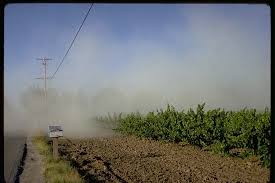11
Nov
EPA Registers Dicamba for GE Crops, Adding to Growing Herbicide Resistance Issue
(Beyond Pesticides, November 11, 2016) The U.S. Environmental Protection Agency (EPA) has registered a new formulation of dicamba to control weeds in cotton and soybean crops that have been genetically engineered (GE) to tolerate the chemical. The new formulation is called Xtendimax with VaporGripâ Technology, which is claimed to be specifically designed to have lower volatility. The registration, which is time-limited, will automatically expire after two years. According to the Center for Biological Diversity, EPA ignored the legal requirement to explore threats to endangered species, approving this new formulation without considering impacts to species protected under the Endangered Species Act. This decision comes directly after EPA announced that it is reapproving the toxic herbicide mixture Enlist Duo, and proposed to expand the number of crops and states in which it can be used.
Dicamba has been linked to damage of the kidney and liver, neurotoxicity, and developmental impacts. The chemical has a strong propensity to volatilize small particles of the herbicide into the air and drift far off-site. Sensitive crop species can be damaged by dicamba at levels in the parts per million. A study published by Pennsylvania State scientists in late 2015 found dicamba drift was “frequently responsible for sublethal, off-target damage” to plants and insects. Researchers found that even very low rates of dicamba herbicide exposure negatively impacted plant flowering, and thus insect pollination.
rates of dicamba herbicide exposure negatively impacted plant flowering, and thus insect pollination.
Dicamba has caused a lot of controversy in the past. In August, farmers in Missouri, Arkansas, and Tennessee confronted widespread crop damage and braced for lower yields as a result of agrichemical giant Monsanto’s botched roll-out of GE soybean and cotton crops. The company, whose current line of glyphosate-tolerant crops are failing to control weeds throughout the U.S. and across the globe, developed a new line of soybean and cotton with traits that make it tolerate applications of dicamba. In October, EPA launched a criminal investigation at several locations in Missouri into the illegal spraying of dicamba. Many suspect that farmers who planted the new dicamba-tolerant genetically engineered (GE) seeds in the region, when faced with a proliferation of pigweed, illegally sprayed dicamba across their fields, leading to drift and off-site crop damage to other farmers.
An important point of dicamba’s registration is that EPA has specified that the registration is time-limited and will expire after two years. This is a novel regulatory approach for the agency, and for all intents and purposes, appears like a conditional registration but is not. According to EPA, “Although we find that herbicide resistance is adequately addressed by the required herbicide resistance plan and do not expect off-site incidents to occur due to this registration, we are placing time limits on the registration to allow the agency to make appropriate regulatory changes or to allow the registration to expire if there are problems with off-site incidents or development of weed resistance.” This is not a viable alternative to conditional registration. That being said, it is good that the agency is recognizing problems with resistance, but critical to take the next step —to encourage alternatives instead of allowing resistance to occur in the first place.
A startling number of pesticides, nearly 65% of the more than 16,000 pesticides now on the market, were first approved by the process of “conditional registration.” Meanwhile, the Canadian Pest Management Regulatory Agency finalized its decision to discontinue granting new conditional registrations. Conditional registrations have backfired for EPA in the past, leading to grueling legal processes between the agency and chemical manufacturers. Rather than provide avenues for chemical companies to game the system and poison the environment, advocates argue that EPA strongly encourage pest prevention and readily available alternatives to toxic pesticides.
Beyond Pesticides has long advocated a regulatory approach that prohibits hazardous chemical use and requires alternative assessments to identify less toxic practices and products under the unreasonable adverse effects clause of the Federal Insecticide, Fungicide and Rodenticide Act (FIFRA). Farm, beekeeper, and environmental groups, including Beyond Pesticides, have urged EPA to follow in the steps of countries like Canada and the European Union by following the precautionary principle, which generally approves products after they have been assessed for harm, not before. Beyond Pesticides suggests an approach that rejects uses and exposures deemed acceptable under risk assessment calculations, and instead focuses on safer alternatives that are proven effective, such as organic agriculture, which prohibits the use of toxic chemicals. By strengthening on-farm resources, such as soil fertility, pasture and biodiversity, organic farmers can minimize and even avoid the production challenges that most genetically engineered organisms have been falsely-marketed as solving.
All unattributed positions and opinions in this piece are those of Beyond Pesticides.
Source: EPA, Center for Biological Diversity
All unattributed positions and opinions in this piece are those of Beyond Pesticides.










